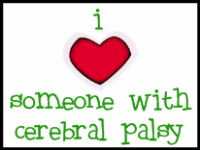Welcome to Friday Facts! here on the Knowledge Safari blog. Each Friday we aim to shine the spotlight on a particular segment of special needs, including medical conditions like Neuroblastoma. We do this in order to provide information and raise awareness.

This past week we highlighted little Layla Grace - she is in the final stages of fighting this terrible childhood cancer. Her parents have a website, facebook and twitter where they communicate with those following. If you want to send some comforting words their way, I am sure they would appreciate it.
The following information is taken from the American Cancer Society:
What Is Neuroblastoma?
Neuroblastoma is a form of cancer that starts in certain types of very primitive nerve cells found in an embryo or fetus. (The term neuro refers to nerves, while blastoma refers to a cancer that affects immature or developing cells). This type of cancer occurs in infants and young children. It is rarely found in children older than 10 years.
To understand neuroblastoma, it helps to know something about the normal structure and function of the sympathetic nervous system, which is where these tumors start.
About the sympathetic nervous system
The nervous system consists of the brain, spinal cord, and the nerves that reach out from them to all areas of the body. The nervous system is essential for thinking, sensation, and movement, among other things.
The nervous system consists of the brain, spinal cord, and the nerves that reach out from them to all areas of the body. The nervous system is essential for thinking, sensation, and movement, among other things.
Part of the nervous system also controls body functions we are rarely aware of, such as heart rate, breathing, blood pressure, digestion, and other functions. This part of the nervous system is known as the autonomic nervous system.
The sympathetic nervous system is a part of the autonomic nervous system. It includes:
Nerve fibers that run along either side the spinal cord.
Nerve fibers that run along either side the spinal cord.
Clusters of nerve cells called ganglia (plural of ganglion) at certain points along the path of the nerve fibers.
Nerve-like cells found in the medulla (center) of the adrenal glands. The adrenals are small glands that sit on top of each kidney. These glands make the hormone adrenaline (epinephrine).
The main cells that make up the nervous system are called nerve cells or neurons. These cells communicate with other types of cells in the body by releasing tiny amounts of chemicals (hormones). This is important, because neuroblastoma cells often release certain hormones that can cause symptoms.
The main cells that make up the nervous system are called nerve cells or neurons. These cells communicate with other types of cells in the body by releasing tiny amounts of chemicals (hormones). This is important, because neuroblastoma cells often release certain hormones that can cause symptoms.
Neuroblastomas
Neuroblastomas are cancers that start in early nerve cells of the sympathetic nervous system (sympathetic neuroblasts), so they can be found anywhere along this system.
A little more than 1 out of 3 neuroblastomas start in the adrenal glands. About 1 out of 3 begins in the sympathetic nerve ganglia of the abdomen. Most of the rest start in sympathetic ganglia near the spine in the chest or neck or in the pelvis.
Neuroblastomas are cancers that start in early nerve cells of the sympathetic nervous system (sympathetic neuroblasts), so they can be found anywhere along this system.
A little more than 1 out of 3 neuroblastomas start in the adrenal glands. About 1 out of 3 begins in the sympathetic nerve ganglia of the abdomen. Most of the rest start in sympathetic ganglia near the spine in the chest or neck or in the pelvis.
In rare cases, a neuroblastoma may have spread so widely by the time it is found that doctors can't tell exactly where it started.
Neuroblastomas can behave strangely. For example, sometimes the cancer cells die without any cause and the tumor goes away on its own. This is much more common in very young infants than in older children. In other cases, the cells sometimes mature spontaneously into normal ganglion cells and stop dividing. This causes the tumor to become a ganglioneuroma (see below).
Other autonomic nervous system tumors
Not all childhood autonomic nervous system tumors are malignant (cancerous).
Ganglioneuroma is a benign (non-cancerous) tumor made up of mature ganglion and nerve sheaths.
Not all childhood autonomic nervous system tumors are malignant (cancerous).
Ganglioneuroma is a benign (non-cancerous) tumor made up of mature ganglion and nerve sheaths.
Ganglioneuroblastoma is a tumor that has both malignant and benign parts. It contains neuroblasts (immature nerve cells) that can grow and spread abnormally, as well as areas of more mature tissue that are similar to ganglioneuroma.
Ganglioneuromas are usually removed by surgery and looked at carefully under a microscope to be certain they do not have areas of ganglioneuroblastoma. If the final diagnosis is ganglioneuroma, no other treatment is needed. In contrast, ganglioneuroblastomas are treated the same as neuroblastomas.
Join us on Twitter
Join us on Facebook































No comments:
Post a Comment